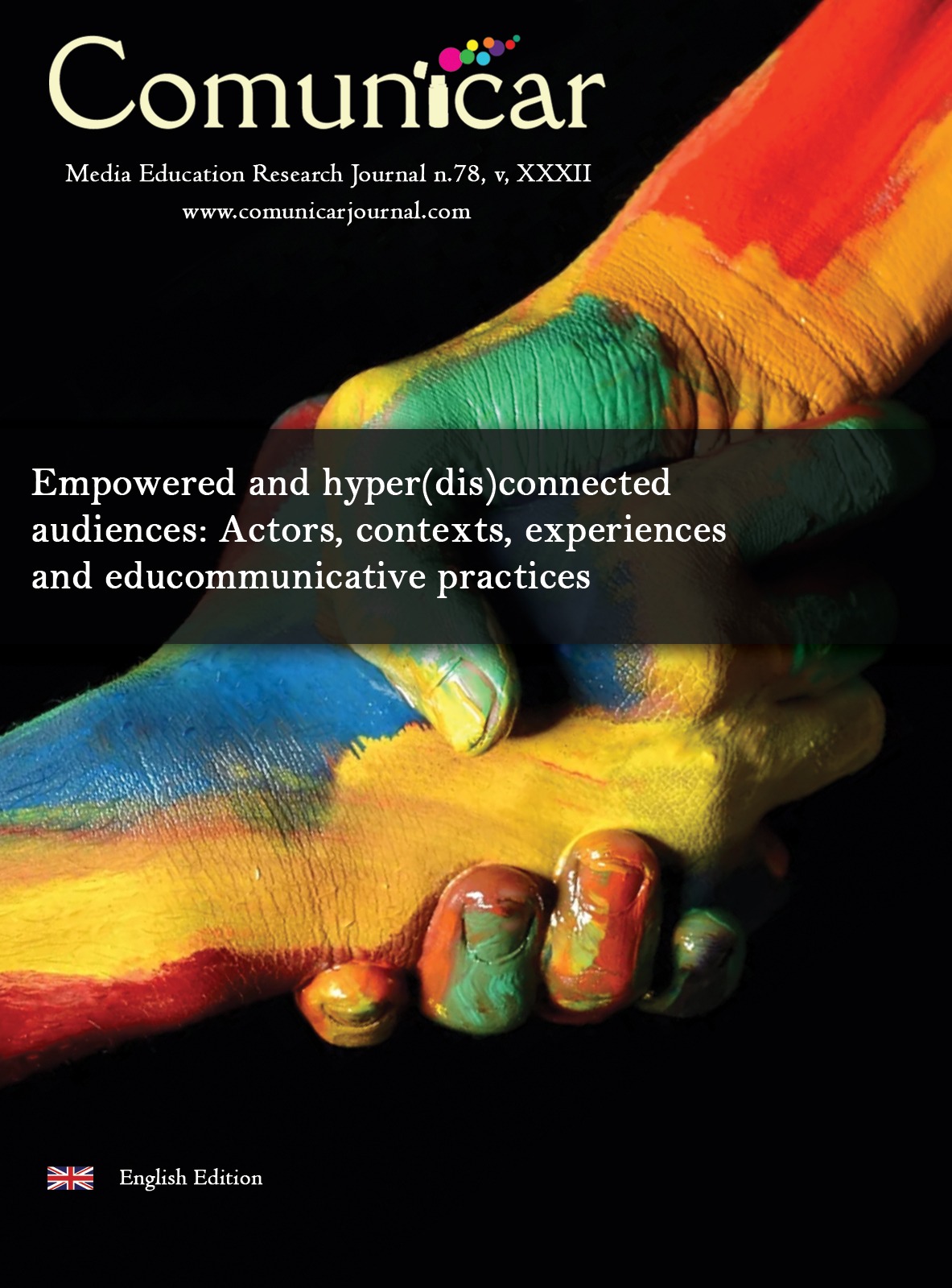波兰新冠疫情封锁期间的网络表情包
IF 5.1
1区 文学
Q1 COMMUNICATION
引用次数: 18
摘要
波兰是2020年遭受新冠肺炎大流行袭击的国家之一,波兰政府实施了限制措施,以遏制该病毒的传播。互联网和社交媒体成为人们对发生的事件(包括封锁)的反应的渠道。这种反应的一部分以创造和分享表情包的形式出现——这是一种数字参与文化的表达。本文旨在分析如何通过网络表情包传播和叙述Covid-19,以及它们如何呈现大流行和负责抗击它的行动者。采用框架元素内容分析和比较叙事分析,对来自6个媒体平台的1763个模因进行了分析。结果表明,模因提供了一种对波兰人所经历的情况的评论形式。最常见的表情包类别是“禁令和命令”,包括经常被批评和嘲笑为毫无意义的限制。这些表情包中的主角都是普通市民,经常以喜剧的方式被描绘成对病毒漠不关心、违反禁令的人。他们还被描述为警察和政府的受害者。此外,负责防治这一流行病的人被描绘成无能的人,对不遵守这些规定的人施加不必要的严厉限制和惩罚。Polonia fute uno de los países golpeados pla Covid-19大流行在2020年,cuyo gobierno impuso restricciones para combativ propagación del病毒。互联网为社会提供了便利,使社会环境变得更加便利,同时也为人们提供了便利,使人们能够对各种人物和事件进行反应,包括对个人的限制。我们的合作伙伴reacción通过creación通过difusión通过meme,我们的合作伙伴expresión通过数字文化参与。El呈现estudio tiene como目标分析cómo El Covid-19通过叙事传播和传播传播在互联网上传播;cómo El Covid-19通过战斗责任人呈现大流行。Fueron analyizados 1.763 meme de seismedios empleando unanálisis de contenidos conelements de enmarque y análisis比较叙事。结果是:1 .结果是:1 .结果是:1 .结果是:1 .结果是:1 .结果是:1 .结果是:1 .结果是:1 .结果是:1。“categoría más流行的fuue La de«prohiiciones y órdenes»”,“aldiendo”和“las限制”经常出现在“批评”和“可笑”的“como inútiles”上。责任人主要负责管理违反法律规定的人员,经常负责管理违反法律规定的人员cómica责任人负责管理违反法律规定的人员。tamamicassen fueron提出como víctimas de la policía y el gobierno。Además,应对大流行病的责任人,包括不称职的人,所有的限制都是由制裁造成的,过度的限制是不合理的。本文章由计算机程序翻译,如有差异,请以英文原文为准。
Internet memes in Covid-19 lockdown times in Poland
Poland was one of the countries that was hit by the Covid-19 pandemic in 2020, and its government imposed restrictions to combat the spreading of the virus. The Internet and social media became outlets for people’s reactions to the events that unfolded, including the lockdown. A part of this reaction came in the form of creating and sharing memes – an expression of digital participatory culture. This paper aims to analyze how Covid-19 was communicated and narrated through Internet memes and how they presented the pandemic and actors responsible for fighting it. 1,763 memes from six media platforms were analyzed using content analysis with framing elements and a comparative narrative analysis. The results show that the memes provided a form of commentary on the situation experienced by Poles. The most common category of memes was “bans and orders”, involving restrictions that were often criticized and ridiculed as pointless. The main characters within the memes were ordinary citizens, often portrayed in a comedic way as careless in regards to the virus and violating the restrictions. They were also presented as victims of the police and the government. Furthermore, the people responsible for fighting the pandemic were portrayed as incompetent and imposing needlessly severe restrictions and penalties for not abiding by them.
Polonia fue uno de los países golpeados por la pandemia del Covid-19 en 2020, cuyo gobierno impuso restricciones para combatir la propagación del virus. Internet y las redes sociales se convirtieron en un escape para las reacciones de las personas a estos eventos, incluido el confinamiento. Una parte de esta reacción vino en forma de creación y difusión de memes, una expresión de la cultura digital y participativa. El presente estudio tiene como objetivo analizar cómo el Covid-19 fue comunicado y narrado a través de los memes en Internet y cómo fue presentada la pandemia y los responsables de combatirla. Fueron analizados 1.763 memes de seis medios empleando un análisis de contenidos con elementos de enmarque y análisis comparativo narrativo. Los resultados muestran que los memes fueron una forma de expresión sobre la situación vivida por los polacos. La categoría más popular fue la de «prohibiciones y órdenes», aludiendo a las restricciones que frecuentemente fueron criticadas y ridiculizadas como inútiles. El personaje principal de los memes fueron los ciudadanos, frecuentemente retratados de una manera cómica como personas irresponsables en cuanto al virus y violaciones de las restricciones. También fueron presentados como víctimas de la policía y el gobierno. Además, las personas responsables de combatir la pandemia fueron retratadas como incompetentes, al imponer restricciones y sanciones excesivamente estrictas por no obedecerlas.
求助全文
通过发布文献求助,成功后即可免费获取论文全文。
去求助
来源期刊

Comunicar
Multiple-
CiteScore
10.10
自引率
5.40%
发文量
40
审稿时长
20 weeks
期刊介绍:
Comunicar specialized in educommunication: communication and education, ICT, audiences, new languages...; monographs specialized in current issues. Double format: printed and online; digitally, accessible in full text, free of charge, for the entire scientific community and researchers around the world. Coeditions printed in Spanish and English for the whole world. Published by Oxbridge Publishing House which collaborates with many international centres and universities.
 求助内容:
求助内容: 应助结果提醒方式:
应助结果提醒方式:


